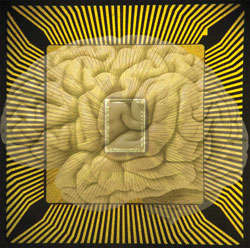First oil
Mind in matter: Future of oilfield computing
|
“I am putting myself to the fullest possible use, which is all I think that any conscious entity can ever hope to do.”—HAL 9000 in 2001: A Space Odyssey.
Even before the first ENIAC computer was built in 1946, science fiction writers have imagined innumerable scenarios, where computers have begun to think like human beings, and have taken over our world. The movie, 2001: A Space Odyssey was based on a book, The Sentinel, by science fiction author Arthur C. Clarke. In the movie, the computer is HAL 9000, which thinks of itself as a conscious entity and resists human attempts to shut it down, when its actions take on a sinister turn. Too complex to comprehend. It is now 2014, about 45 years since 2001: A Space Odyssey was shown in theaters. Neuroscientists know about various parts of the brain and what functions they perform. But we’re still conducting basic research on how neurons, the functional units of the brain, perform their computing and communication tasks. A typical human brain has approximately 85 billion neurons, and each neuron makes about 10,000 connections with other neurons At this time, neuroscientists have been able to scan mouse brain tissue the size of a grain of salt. Synaptic chip. Undaunted by the complexity of the brain, computer scientists and engineers in diverse disciplines, such as artificial intelligence, robotics and cognitive computing, have been inching their way along, using mechanical and electronic devices to emulate what nature has created through biological processes and millions of years of evolution. The most recent example is IBM’s introduction, in late August 2014, of TrueNorth, a 5.4-billion-transistor chip with 4,096 neurosynaptic cores that are interconnected via 1 million programmable spiking neurons and 256 million configurable synapses. The chip has a parallel, distributed architecture that is similar to the functioning of the brain, and different from the sequential, centralized von Neumann architecture of conventional computers. According to an IBM-authored article in Science magazine, computation in the TrueNorth chip is measured by using synaptic operations per second (SOPS), whereas in conventional computers, it is floating-point operations per second (FLOPS). Although not a direct comparison, TrueNorth can deliver 46 billion SOPS per watt for a typical network and 400 billion SOPS per watt for networks with high spike rates and a high number of active synapses; whereas today’s most energy-efficient supercomputer achieves 4.5 billion FLOPS per watt. Oilfield applications. Artificial neural networks have been used for more than a decade in oilfield applications. Typical uses have included developing a network of about six neurons to predict optimum sites for infill wells. I can see the future now. We’ll have 2021: An Oilfield Odyssey, where synaptic chips are embedded in seismic sensors to provide interpreted seismic images in real time, downhole sensors for imaging while drilling, and intelligent EOR to deliver up to an 80% increase in hydrocarbon recovery. A science fiction that will soon be science reality? Stay tuned.
|




